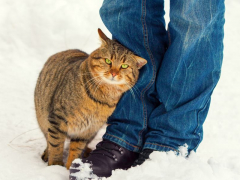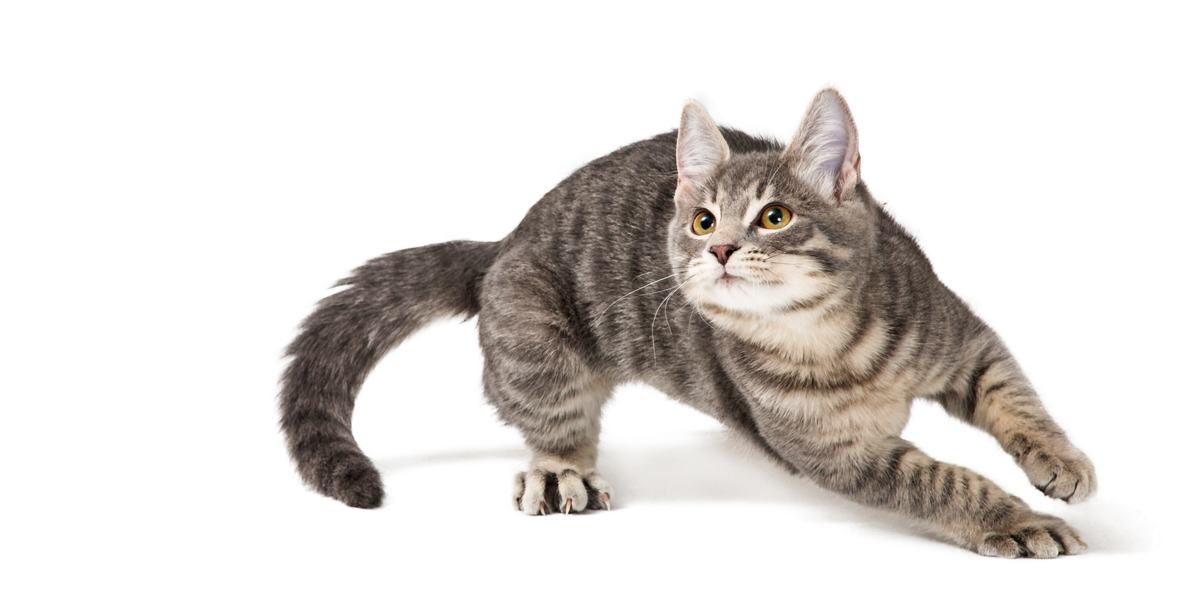
When we think of cats, we think of the cool, calm, collected hunter: a predatory animal. However, it might come as a surprise to some cat lovers to learn that cats are also a prey species.
As a result, it is in a cat’s behavior to run away if they feel scared, uncomfortable, or threatened. This article will consider what it could mean if your cat is running away from you and what can be done to help.
Why Do Cats Run Away From Their Owners?
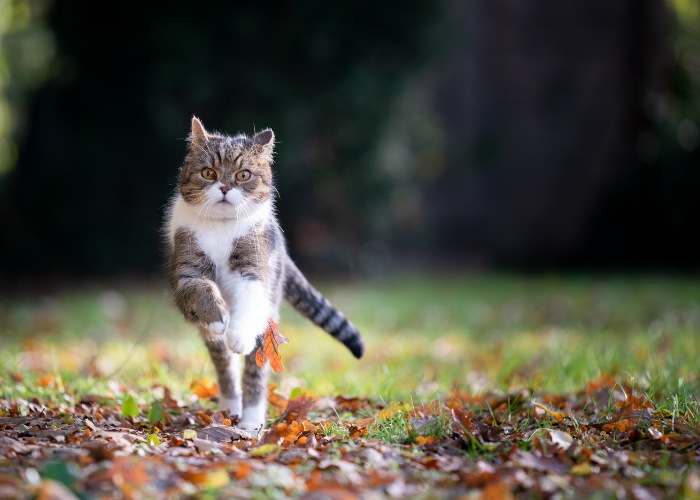
Speed varies depending on how a cat is built physically, and personality plays a role, too.
Some cats are naturally aloof. If you own a fur baby who prefers to keep to herself, you probably already know to let her set the rules for your relationship rather than forcing your love onto her, however much you want to squish those cute toe beans!
However, if you have noticed your cat has suddenly started to run away from you or is avoiding you, there are several common reasons, discussed below.
Illness Or Injury
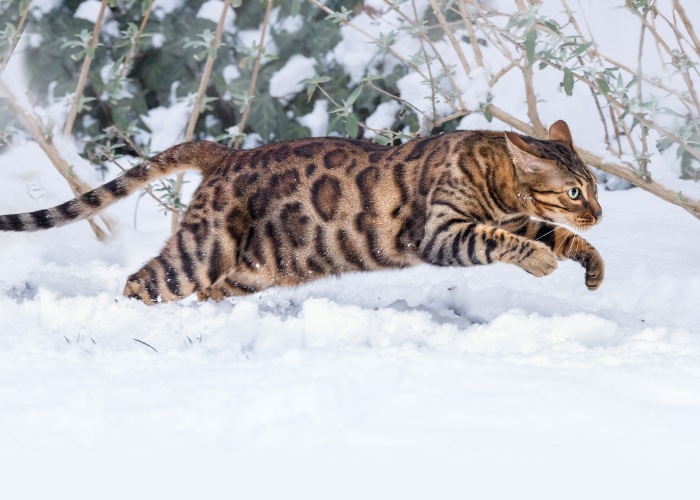
Though all cats vary, the average house cat can hit a top speed of around 30 miles per hour.
As a prey species, cats are programmed not to show signs of pain or weakness. As a result, it can be notoriously difficult to know when your cat is feeling poorly until such a time they are really quite sick.
One sign of illness in cats is when they become more withdrawn, hiding or actively running away from their owners. This sign is not specific to any particular disease but should always prompt a checkup at your local veterinary clinic. Your veterinarian will need to take a comprehensive history and perform a physical examination to determine the possible reasons.
Stress Or Fear

Your cat’s back legs are packed with muscle. That strength helps propel them forward with each stride.
Triggers for stress or fear can sometimes be very subtle or even imperceptible to us. Just because you can’t recognize a trigger doesn’t mean your cat isn’t feeling anxious about something.
Significant life changes, such as building work, moving to a new home, new pets, or a new baby, can be very stressful for cats. However, a neighboring cat entering your garden or a minor disagreement between cats in a multi-cat household can lead to significant stress for your cat.
Also Read: 5 Visual Signs of a Stressed Cat and How to Help
If you are unsure if your cat’s behavior is due to stress or fear, discuss it with your veterinarian. They will be able to advise you and guide you to a licensed veterinary behaviorist if needed.
Personality
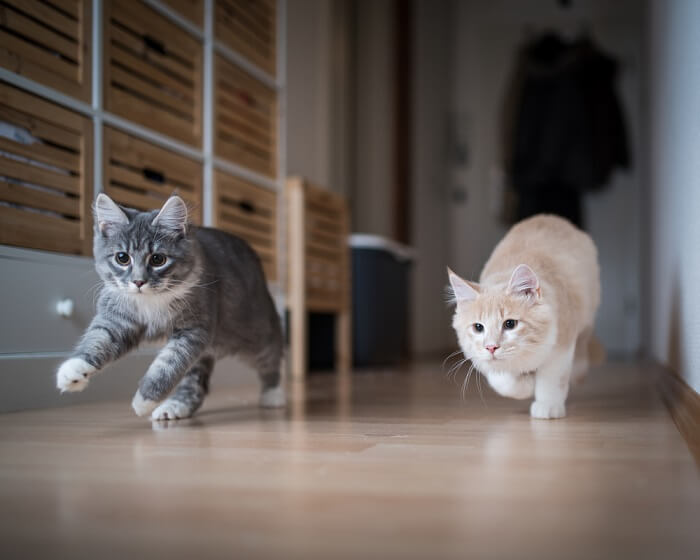
As any cat lover knows, every cat is individual in their personality, likes, and dislikes. This is true of their preferences for social interactions, too. While some cats would happily be cradled like a baby and allow you to pet them all day, every day, others prefer short or low-intensity interactions.
It is essential to be guided by your cat’s social needs, as forcing social interactions will likely lead to stress and anxiety, which can cause significant behavioral problems for your feline friend.
Mood

Sometimes, your cat may simply not be in the mood for you! Cats enjoy control. If they feel you or another family member will instigate a social situation when they are not in the mood for it, a simple solution is to run away from you.
This can be especially true of cats’ interactions with young children, although often there may be a stress or fear component here, too.
Playfulness

By giving your cats an environment with plenty of outlets for their climbing, exploratory instincts, you can reduce their desire to jump on the counter.
For some cats, running away from you may simply be part of a game. If your cat seems happy, relaxed, or cheeky while running away, or comes back to you repeatedly to initiate play during this behavior, it may simply mean that they are having fun with you!
Why Is My Cat Suddenly Avoiding Me?
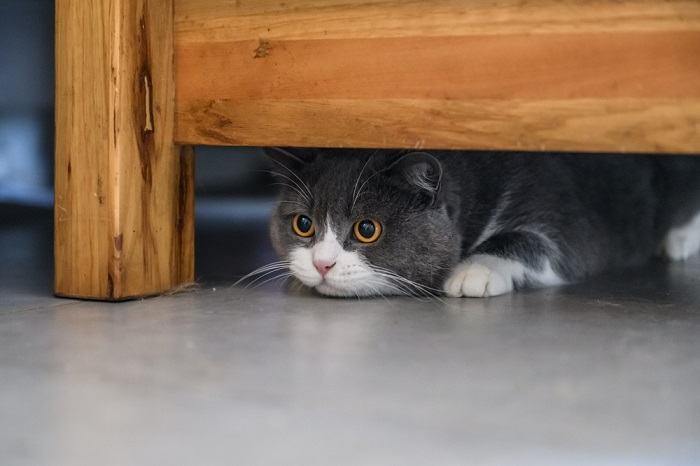
If your cat abruptly begins hiding or avoiding you, it could indicate a health problem.
If your cat has changed her behavior suddenly and is now hiding away, actively avoiding you, or running away when you are around, it may well mean something is wrong. It is vital to rule out any medical issues before assuming a problem is purely behavioral, so make an appointment for a checkup with your local veterinarian.
They will then take a thorough history and perform a physical examination to assess for any problems. If problems are identified, your veterinarian may advise some diagnostic investigations to get to the bottom of the issue.
If a medical reason cannot be found for the behavioral change, your veterinarian will work closely with you and a licensed veterinary behaviorist, if appropriate, to help identify what may have triggered your cat’s behavioral change.
How Can You Tell If A Cat Is Scared?
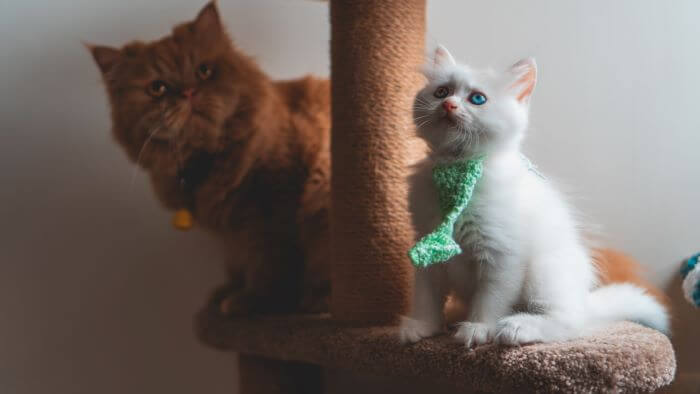
There are several ways to keep your cat from jumping on counters, including providing elevated platforms for them to use instead.
In addition to hiding or running away, some behaviors can indicate your kitty isn’t feeling too happy about a situation:
- Tense muscles
- Flat or rotated ears
- Flicking tail
- Wide eyes with big pupils
- Arching back or fluffing up their fur
- Hissing or spitting
- Scratching or swiping
- Peeing or pooing outside of their litter box
- Vocalization or meowing
Taking time to learn to read your cat’s body language can help you to understand what they are thinking. This will allow you to respect their natural boundaries and help to build a stronger social bond.
How Do You Get A Cat To Trust You?
Build Trust
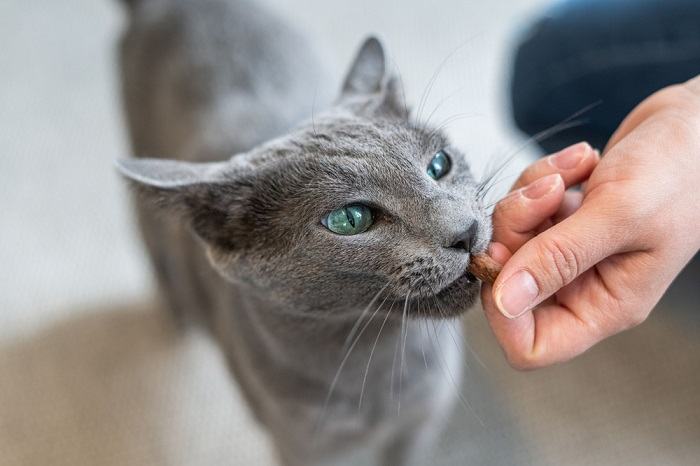
In addition to respecting your cat’s boundaries, tasty food goes a long way toward winning over a shy cat.
A large portion of building a bond with your cat comes from understanding their social cues and abiding by the boundaries they set. Regular, consistent, consensual social bonding time helps with this, as does understanding what your cat enjoys from social bonding time, be it endless baby cuddles or simply coexisting without any touching on the sofa.
Ensure you are consistent in your approach; irregularity in the way your interact with or handle your cat may make her wary or uncertain around you. Be gentle and calm with the tone of voice you use around your cat and minimize loud noise or stressors.
Respect Your Cat’s Limits
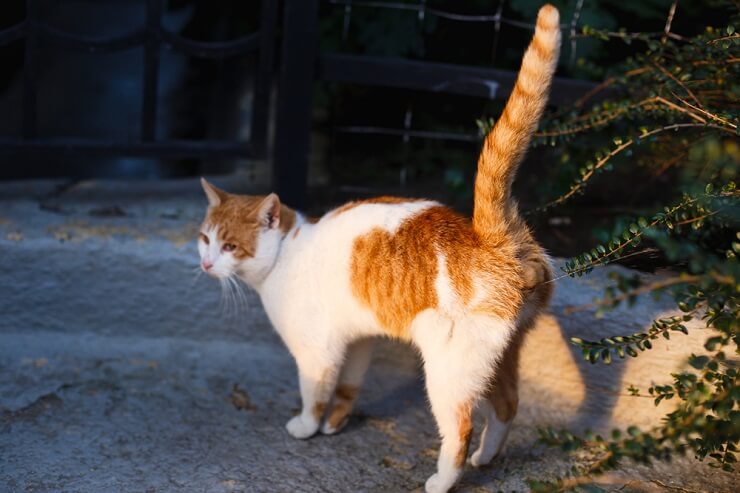
Let your cat initiate your interactions and recognize when she has had enough. An important part of building trust with your cat is to give them choices regarding interactions and to respect the decisions your cat makes.
Safe Spaces

A vital resource in any cat-owning home are safe spaces to which your cat can retreat when they want alone time. This may be anything from a nook your cat likes to sleep in or a warm spot under the bed to purposely designed cat rooms or platforms with cozy cat beds and scratching posts.
The safe space should be away from the litter box and food bowls. The important thing is to respect your cat’s safe space and not to intrude when they are resting there, however cute they might look!
It’s a cat’s natural instinct to have a safe spot to hide away in when they feel stressed or scared, and by intruding on this space, you will likely make these negative feelings worse. Using cat pheromone diffusers can enhance a sense of well-being for cats and make a great addition to any cat-friendly space.
Positive Reinforcement

Providing fun or positive resources for your cat during times of interaction can help to encourage social time and build trust. Examples include playtime with a particularly fun or catnip-infused toy or using tasty treats during your interaction (providing your kitty doesn’t suffer from weight issues).
Learn About Feline Behavior

Cats are complex animals, and their behavior differs vastly from ours. By assuming cats think as we do, many cat owners can find their cats developing behavioral issues. Instead, take some time to learn what your cat’s behavior means. It will make building a trusting and happy relationship with your cat much easier!
Closing Thoughts
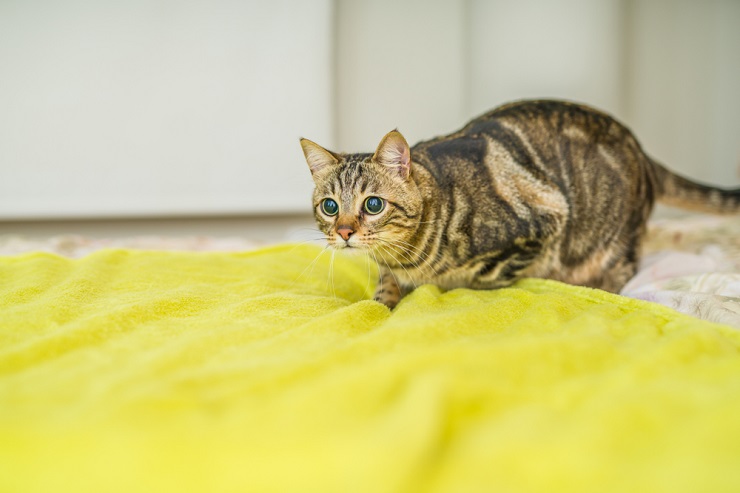
If your cat has suddenly started running away or hiding from you, it is essential to speak to your local veterinary care provider. Your veterinarian will work with you to rule out any medical reasons that may have caused the behavioral change.
If no medical concerns are found, your veterinarian will help you, alongside a licensed veterinary behaviorist if needed, to get to the bottom of what might be leading to the problem.
Frequently Asked Questions
Why is my cat suddenly running away from me?
There are many reasons why your cat may suddenly be running away from you. One significant reason is that they might be sick or in pain. If your cat has a sudden behavior change, it is important to have her checked by your local veterinarian before assuming a behavioral issue.
Do cats run away if they are unhappy?
Yes. Although we don’t think of them as such, cats are natural prey animals. Therefore, it is in their nature to run away from a situation that makes them stressed, scared, or anxious.
How can you tell if a cat is scared?
As well as running away or hiding, which can both be signs of fear, cats may show other changes in their body language. These include tensing their muscles, flicking their tail, wide eyes with big pupils, hissing or spitting, scratching or swiping, and even going to the toilet in places other than their litter tray.
How do you get a cat to trust you?
Building trust with your cat takes time a patience. Important cornerstones to building a trusting relationship include consistency, understanding your cat’s behavior and preferences, regular playtime, and respecting your cat’s personal space and boundaries.



